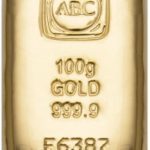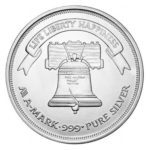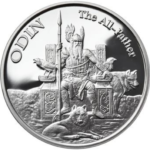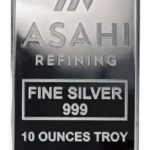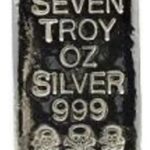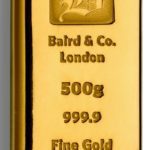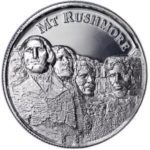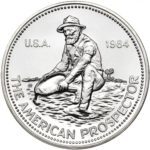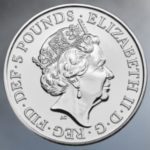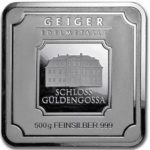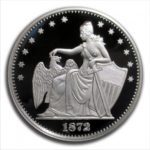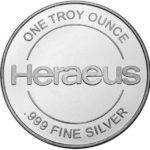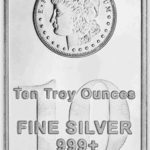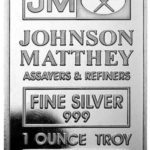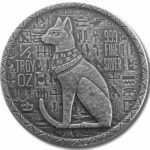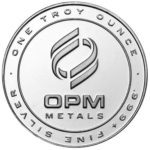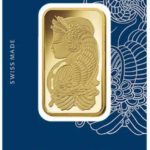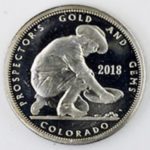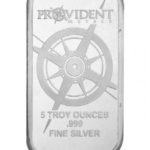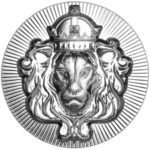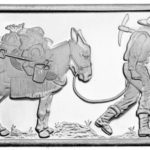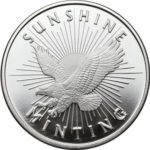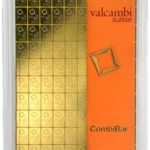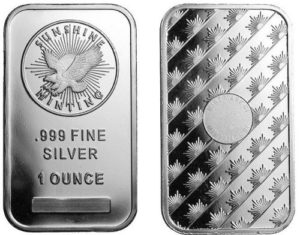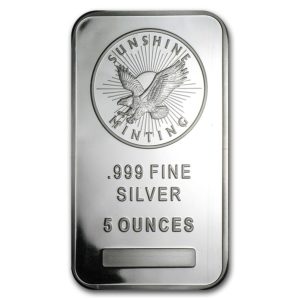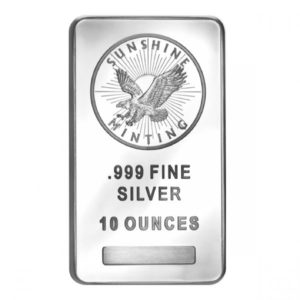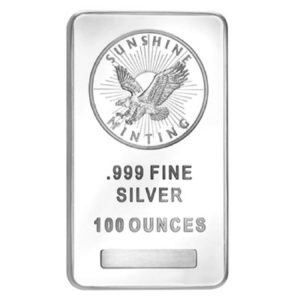Silver Bars
Collecting silver bars isn’t just a fun and fulfilling hobby, it is also a wise investment strategy. If investing in silver bars has piqued your interest, you may have considered buying some bars in which to start your collection.
While you can jump right in and buy some popular silver bars right now, some folks like to fully understand what it is they are actually buying. There are many different types of bars and mints, and for some new collectors bitten by the silver bug deciding where to start can be a bit overwhelming.
Whether you are new to investing or are an experienced silver bar buyer, the following guide was created to explain to you everything you need to know about silver bars.
What are Silver Bars?
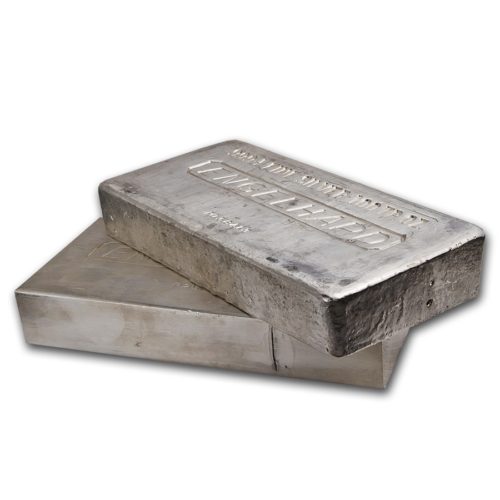
Silver bars are a common form of precious metal bullion. Like coins, each bar is a unit of silver created for the purpose of storing and trading the metal in a convenient manner. Bars are so-called because of their rectangular shape. They can be as thin as a stack of credit cards or as thick as a brick, depending on the weight of the bar.
Bars are designed specifically to be stacked for storage purposes, keeping as much wealth as possible in the smallest space possible. Bars can also be melted down and recast into smaller bars, ingots or coins in order to divide them into smaller increments.
Silver bars are produced by many different mints around the world for investment purposes.
Common Denominations
Silver bars are produced in a range of standard weights. The weight of bars are either measured by grams or troy ounces.
When referring to silver bullion, note that ounces always refer to troy ounces. A troy ounce is slightly heaver than a regular imperial ounce. An imperial ounce weighs 28.35 grams, but a troy ounce is equal to 31.1 grams. The use of troy ounces to measure precious metal dates back to the Middle Ages, and originates from the town of Troyes, France.
Here here the most common denominations listed below in order from smallest to largest:
1 gram silver bars
5 gram silver bars
10 gram silver bars
1/2 ounce silver bars
1 ounce silver bars
100 gram silver bars
5 ounce silver bars
10 ounce silver bars
500 gram silver bars
1 kilogram silver bars
100 ounce silver bars
1000 ounce silver bars
Silver Content
Genuine silver bars are made of .999 fine silver. What does that mean exactly?
Pure silver is mixed with other elements inside the earth, so after it is mined it must be refined through a process that removes the other unwanted elements. The purity of refined silver is graded on a scale of “millesimal fineness”, which means that purity is measured in units of one-thousandth.
Put simply, .999 silver is an alloy containing 99.9 percent pure silver and 0.1 percent other metals. Only .999 silver, or better, is considered investment grade. Higher levels of fineness are sometimes used, for example the Royal Canadian Mint produces investment grade coins made of .9999 silver, which are 99.99 percent silver.
Sterling silver has a fineness of .925, and is most often used in jewelry making. That means sterling silver is an alloy that is 92.5 percent pure silver, with the remainder made up of other metals—typically copper. Scrap sterling can be melted down and refined to produce .999 silver.
History of Silver Bars
Silver bars are one of the oldest forms of wealth, being used as money and a store of value for more than 4,000 years. Other than land and real estate, kings, queens, and other monarchs held their kingdom’s wealth in gold and silver bars. Gold obviously held much more value in a short space. Silver, on the other hand, is considered “everyman’s precious metal” because you don’t have to be wealthy to own a considerable amount.
Silver mining began in Turkey around 3000 BCE. In nature, silver is typically found with other metals or minerals. To remove the silver from other elements, miners in the region developed a process known as “cupellation”. It involved melting the ore at various temperatures until the desired silver could be extracted from the other parts.
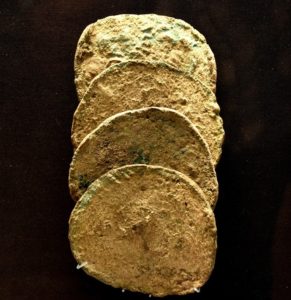
Silver ingots from ancient Syria
Silver was first used to create jewelry, utensils and ritual objects. Due to its beautiful shine, the metal became highly valued by cultures all around the world. As a result, silver became a store of value that could be used in trade. Merchants used ingots for trade, and smaller scraps called hacksilver were cut from ingots or pieces of jewelry to settle small transactions. Centuries later, Vikings would go onto accumulate large hoards of hacksilver which continue to be discovered to this day.
Beginning in the 6th century BCE, silver coins emerged as common currency. The first coins were produced by the Lydians with nearby Greek city-states following suit and issuing their own silver currency.
Silver ingots of various shapes, such as discs, loaves and rings, were used to store large amounts of wealth by various cultures. Talents, for example, were large weights of silver weighing just over 100 lbs used in the ancient world that more closely resembled wheels of cheese than modern day bars. In China, vessel shaped ingots known as the “sycee” were used to store silver starting during the Qin Dynasty (3rd century BCE).
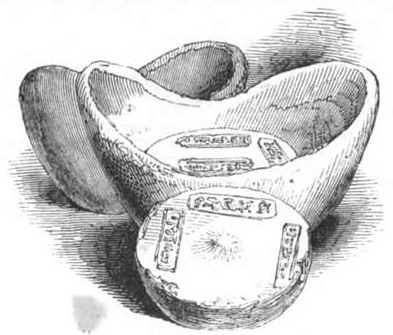
Silver sycee, used in ancient China to store wealth.
Following the discovery of the New World, European colonists began extracting precious metals from the Americas. The Spanish established mints throughout its conquered territories to refine gold and silver and produce various types of bullion including coins and bars. To make a bar, the Spanish would fill a wooden box with wet sand. Then they would push a rod into the sand to form ingot-sized cavities. They would then pour the silver (or gold) into the holes and allow it to cool. The ingots would then be stamped with a hallmark and the royal seal indicated that taxes to the crown were paid.
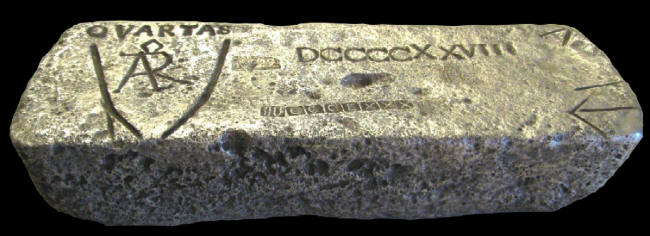
Spanish silver bars recovered from the 1622 wreck of the Nuestra Senora de Atocha
Eventually the Spaniards, and the rest of Europe would upgrade their casting equipment. Cast iron ingot molds were adopted in the mid-1600s, leading to the rectangular shaped bars that we are used to seeing today.
How Silver Bars are Made
Before silver can be turned into bars, it first must be mined and refined. Silver exists in nature alongside other elements and minerals, and typically must be extracted from ores of other elements such as lead, zinc and copper. Large chunks of silver-rich ore are crushed into smaller and smaller pieces until the ore is crushed into powder.
Next, the crushed ore must be refined by putting it through a combination of different chemical treatments or smelting at high temperatures to extract the desired silver from other elements.
The method of extraction varies depending on the type of ore the silver is in. For example, silver and other precious metals are extracted from impure copper when it is refined via electrolysis. The copper is placed in a chemical bath and a current is passed through it. This causes other metals elements, including silver, to separate from the pure copper and fall to the bottom of the chemical tank. Silver is can be extracted from lead ore via a method known as Parkes process.
Finally, samples of the silver must be assayed by a laboratory to verify purity. Once the purity is verified, silver can then be minted into bars.
Silver Bar Production Methods
From pure silver, mints use a variety of methods to produced the finished silver bar product. Silver bars are either hand-poured, minted or cast.
Hand-Poured Silver Bars
The traditional method of producing silver bars is fairly simple. Pure silver, typically in the form of small nuggets called casting grain, is weighed and then melted down into liquid form in a crucible. The molten silver is then poured into a mold and left to cool. The result is a hand-poured silver bar, which is finally stamped with the weight, purity and mint mark.
Hand-poured bars continue to be produced by boutique private mints, and are favored by some collectors for their unique appearance. Hand-poured bars tend to be thicker and less uniform in appearance than minted bars.
Minted Bars
Minted silver bars are made by a more modern form of bullion production used by most private mints today. Much of the processes used to create silver bars today are highly-automated, which allows for the production of millions of pieces of bullion to be made with exacting precision.
The production of minted silver bars begin with blanks. Bar blanks can be produced by running silver strips through a rolling mill in order to obtain the desired thickness. Next, the long strips are cut into pieces of a desired length to produce the blanks. Blanks are usually polished to a high shine before moving on to the next step.
The video below shows how blanks for silver bars and coins are produced:
Pressing
To complete the production of silver bars, blanks are placed in-between two high-pressure dies that press the desired image or logo into the metal. The following video demonstrates the pressing of a gold bar, but the process would be the same for silver:
Cast Silver Bars
Another modern method of creating silver bars is by casting. This process is very similar to hand pouring, except nearly everything is done by machine. This results in a highly uniform product as shown in the video below:
Throughout the entire process, bars are measured and weighed to ensure that they conform to the exacting specifications required for each bar. Any bars that deviate from the correct weights or dimensions must be set aside to be melted down and put through the entire process again.
Popular Private Mints that Sell Silver Bars to Consumers
There are several popular private mints that currently produce silver bars that investors can easily purchase online. There are also many mints that are no longer in operation, but their silver bars are still collected and traded on the secondary market.
Here is an a look at some of the most well known and trusted silver bar producers, both past and present:
Government Mints that Sell Silver Bars to Consumers
While government mints mostly produce coins and medals, there are a handful of government mints that sell silver bars to the public. There are three prominent government mints that currently produce government mints known to currently produce silver bars. Other government mints, such as the United States Mint, has produced silver bars in the past, but do not currently do so.

The Royal Mint in London produces a variety of cast and minted silver bars. Bars are produced in 100 ounce, 10 ounce, 100 gram, 500 gram and 1 kilogram denominations.
Established in 1968 by Queen Elizabeth II in preparation to introduce a decimal coinage into the United Kingdom. The Royal Mint is located in the Welch city of Llantrisant on more than 30 acres and has more than 800 employees. The Royal Mint can produce well over four billion coins per year.
Silver Bars that can be purchased from The Royal Mint include:
- 500g Silver Bar Cast Bullion-999.9% silver (Appox cost. 441.38 Pound Sterling)
- 1kg Silver Cast Bar Bullion-999.9% silver (Appox cost 780.46 Pound Sterling)
- 100g Silver Bar Minted Bullion-999.9% silver ( Appox 120.69 Pound Sterling)
- Britannia10 oz Silver Minted Bar- 999.9% (Appox 287.60 Pound Sterling)

The Royal Canadian Mint in Ottawa produces 10 ounce and 100 ounce silver bars. RCM silver bars are LBMA approved and contain 99.99 percent silver content.
Established in 1908, The Royal Canadian Mint is a Crown Corporation, which means they are owned by Queen Elizabeth II. The mint is responsible for striking all of the coins circulated in Canada but it also produces coins for other countries. The Mint has two headquarters, located in Ottawa and Ontario Canada. One interesting fact, the Mint developed a digital currency called MintChip. It was created to decrease the risk and cost inherent in modern-day monetary transactions. MintChip is secured by the Canadian Government.
Silver Bars that can be purchased from The Royal Canadian Mint include:
- 3-ounce Austrian Philharmonic silver coin and bar set-99.9% pure silver. (Approx. 299.95 Canadian Dollars)
- 3-ounce American Silver Eagle silver coin and bar set-99.9% pure silver (Approx. 299.95 Canadian Dollars)
- 3-ounce China Panda silver coin and bar set-99.9% pure silver (Approx. 299.95 Canadian Dollars)
- 3-ounce Mexican Libertad silver coin and bar set-99.9% pure silver (Approx. 349.95 Canadian Dollars)
![]()
The Perth Mint in Perth, Australia produces 1 ounce minted silver bars and 10 ounce, 100 ounce, and 1 kilogram silver bars.
Established in 1899, The Perth Mint of Australia is owned by the Government of Western Australia. It mints coins and bars from both Australian precious metals and constitutes over 8 percent of global mint production. The Perth Mint produces and sells silver, gold, and other precious metal coins to customers globally.
Silver Bars that can be purchased from The Perth Mint include:
- 2-ounce Australian Lunar Silver coin and bar set-99.9% pure silver. (Approx. 436.36 Australian Dollars)
- 2-ounce Australian Lunar Silver coin and bar set-99.9% pure silver. (Approx. 436.36 Australian Dollars)
20 Common Questions About Silver Bars Answered
What are the different types of silver bars?
Are all silver bars worth the same, regardless of the mint it came from?
Can I buy silver directly from the U.S. Mint?
How should silver bars be stored?
How are silver bars made?
How do I know if a silver bar is real?
What is the best way to buy a silver bar?
How much does a silver bar weigh?
Are silver bars a good investment?
Can silver bars be melted down?
Can you buy silver bars at a bank?
How are silver bars packaged?
How do I sell my silver bars?
20 Silver Terms With Definitions
Global Silver Bullion Supply
How much silver bullion is in the world today?
First let’s consider how much silver has been mined throughout history. This is somewhat challenging to estimate, as a majority of the silver mined throughout history has been utilized for scientific and industrial purposes. That mean nearly half of all the silver ever mined has been lost to landfills or is otherwise unrecoverable.
Taking that all into account, however, it is estimated that around 1,600,000 million metric tons of silver has been extracted from the Earth since the first silver mines were established thousands of years ago. That is the equivalent of about 50 billion troy ounces of silver!
With that in mind, let’s consider the total amount of silver that currently exists in bullion form, whether it be coins or bars. The 2018 World Silver Survey identified the current inventory levels of identifiable above ground bullion supplies along with respective holders:
- Custodian vaults: 1.75 billion ounces
- Exchange traded funds and products: 671.5 million ounces
- Other exchange warehouses: 254.5 million ounces
- Government reserves: 89.11 billion ounces
- Industry reserves: 14.6 billion ounces
- Total bullion supplies: 2.78 billion ounces
While 2.78 billion ounces might sound like a lot, that doesn’t even include privately-owned silver bullion that isn’t placed in custodian vaults. In other words, we need to still account for the amount of retail silver bullion sold to individual investors.
Thankfully, the World Silver Survey also sheds some light on this. It is estimated that in excess of 1.5 billion ounces of silver bullion has been sold to retail investors since the 2008 financial crisis. Combined with the total identifiable bullion supplies, that adds up to approximately 4.28 billion ounces of silver bullion. That is still a conservative estimate as it does not account for retail silver bullion sold prior to 2008.
World’s Largest Holder of Silver Bullion
JP Morgan, the New York City-based international investment bank, currently holds the title of being the largest single owner of silver bullion of all time. As of July 2019, JP Morgan has amassed 155.2 million ounces of silver bullion. The bullion is stored in COMEX warehouses around the globe, and JP Morgan’ holdings account for around 50 percent of the total amount of silver bullion kept in COMEX exchange warehouses and about six percent of the world’s total identifiable reserves.. JP Morgan started buying large quantities of silver bullion, which is typically stored in the form of 1000 ounce silver bars, in 2011 when the price reached around $50 an ounce.
Silver Reserves Around the World
While much silver has been mined from the earth, it is estimated that there is still about 530,000 metric tons of silver remaining in the planet’s crust. Silver is usually recovered as a by-product from the mining of other ores such as lead-zinc, gold and copper, but several dedicated silver mines do exist. Based on current supply and pace of production, it is possible that existing silver inventories could be depleted by 2028 or 2033.
Below is a list of countries with the largest estimated silver reserves:
- Peru: 110,000 metric tons
- Poland: 110,000 metric tons
- Australia: 89,000 metric tons
- Russia: 55,000 metric tons
- China: 41,000 metric tons
- Mexico: 37,000 metric tons
- Chile: 26,000 metric tons
- United States: 25,000 metric tons
- Bolivia: 22,000 metric tons
Good Delivery Bar
You might hear the term “Good Delivery Bar” used when reading about gold and silver. A Good Delivery bar is a bar that means the strict criteria set forth by the London Bullion Market Association (LBMA). The LBMA is an international trade organization that represents the global over-the-counter bullion market. Its membership consists of banks, refineries, traders, mints and mining companies.
The LBMA maintains a list of refineries and mints that meet the Good Delivery requirements. Listed refineries agree to regular quality monitoring by the LBMA in order to maintain their good standing. Only bars that meet the Good Delivery requirements can be used to settle transactions in the London bullion market. Good Delivery bars those that are kept in reserve by central banks, governments and the International Monetary Fund.
To qualify for Good Delivery, silver bars must meet the following specifications:
- Minimum fineness of .999
- Marked with serial number, hallmark, fineness, and date of production.
- Weigh between 750 to 1,100 troy ounces, however a weight between 900 to 1,050 troy ounces is preferred. Most silver Good Delivery bars weigh 1000 troy ounces.
- Dimensions that range between 250-350 millimeters long, 110-150 millimeters wide, and 60 to 100 millimeters thick.
As of 2019, only three refineries in the United States are accredited to produce Good Delivery silver bars out of the more than 80 refineries around the world accredited by the LBMA:
- Asahi Refining USA Inc. (Salt Lake City, UT)
- Kennecott Utah Copper Corp. (Magna, UT)
- Metalor USA Refining Corp. (North Attleboro, MA)
Investing in Silver Bars
Some people buy silver bars just because collecting them is a fun hobby, akin to collecting rare baseball cards or vinyl records. However, many others buy silver bars as an investment with the expectation that the silver bars they purchase today will be worth more in the future. At the very least, investors feel that silver bars will retain their value over time and serve as a secure means of storing wealth.
So are silver bars a good investment? Like most other investments, the price of silver ebbs and flows over time. Over the last five years, silver prices have been range-bound between around $15 to $28 an ounce. Silver prices peaked in February of 1980 at a price of $117.50. That run up in silver prices was primarily due to an attempt by the Hunt Brothers of Texas attempt to corner the silver market.
Silver Thursday
The Hunts, who had inherited a fortune from their father’s success in the oil and gas industry, believed investing in silver would be a hedge against inflation. The brothers bought as much physical silver that they could, and drove up prices in the process. The Hunts borrowed heavily to buy even more silver, eventually including a position valued at $4.5 billion.
Concerned with how the Hunts’ investing activity was manipulating the markets commodity markets, federal regulators introduced new rules that disallowed purchasing long position contracts for silver futures. This move led to a slide in silver prices, and now the Hunts faced millions of dollars in margin calls from their backers on a daily basis.
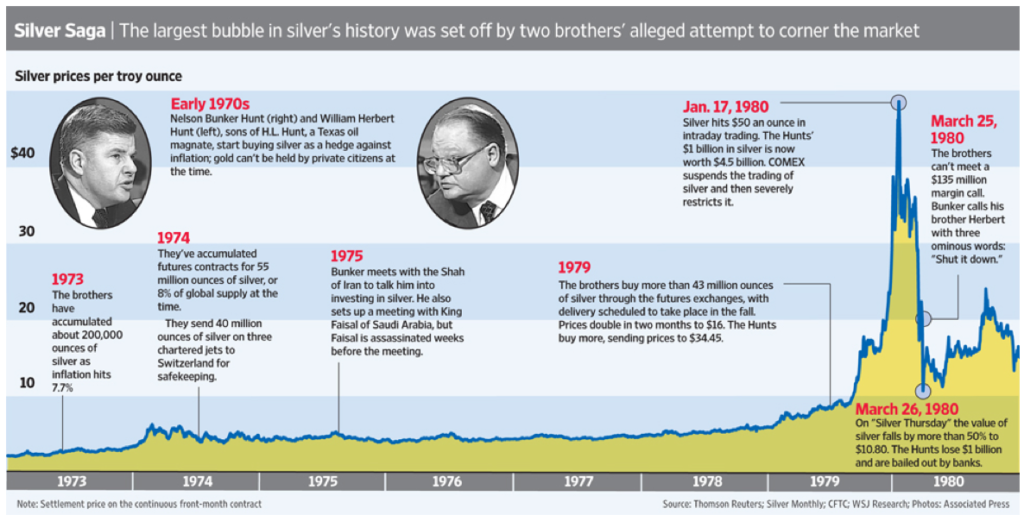
Eventually banks stopped extending credit to the Hunts to pay the calls, and on March 27, 1980 they were unable to pay a margin call. On that day, dubbed Silver Thursday, the price of silver dropped more than 77 percent in one day to a low of $11 an ounce. After all was said and done, the Hunts lost more than a $1 billion on their silver gambit.
Buying Silver Bars
The story of the Hunt brothers is an extreme example, but does show how the price of silver can change rapidly due to unforeseen market forces, just like the price of gold, stocks and other investments.
However, most investors see silver as a hard asset that is a safe place to put your wealth. It is also more affordable than gold, make it a much more accessible precious metal to purchase for the general public.
Here are some things you can do to optimize your silver buying experience and avoid common pitfalls:
The more you buy the more you save.
It’s tough to find silver bars wholesale, however, typically the larger the bar the lower the premium. That means 1000 oz silver bars are going to cost the least when it comes to charge above spot value. One ounce or smaller bars will typically incur a bigger retail premium over spot prices relative to other denominations. You can also save by buying 10 or more at a time. Many online retailers will give you a price break at 10 or more.
Choose the right payment method.
These days online retailers take all kinds of payment methods from credit cards to PayPal and BitCoin. Many retailers charge different prices depending on the payment method, with credit card purchases typically being the most expensive. To get the lowest price on silver bars, you should plan to make a wire or ACH transfer directly from your bank account.
Shop around.
When it comes to buying silver bars, there are four main sources to buy from:
- Direct from private mints.
- On the secondary market, which might include eBay, Amazon or online forums. Beware of scams on the secondary market and be sure you trust the seller or have some form of buyer protection in place.
- Established online retailers. It is easy to compare prices across sites to find the best deal for a particular bar.
- At a local coin shop, also known as an LCS. These brick and mortar shops not only sell coins, but often bullion rounds and silver bars. Simply go here and find your state, then the closest city to where you live to locate the nearest LCS.
Pay attention to premiums.
Most sellers will charge you a premium over spot price. Spot price is the market value of silver at any given time, and like other commodities it changes minute-by-minute during normal trading hours.
How much of a premium a seller charges over spot they charge depends on a variety of factors including: rarity of the bar, the amount of inventory they have on hand, whether you are placing a bulk order, and business operating costs for the retailer. Depending on where you buy, you may be able to negotiate the premium closer to spot prices.
You can explore common silver bar by size at the bottom of this page. There are some private mints that make odd sizes like 25 oz or 1/2 oz, but for the most part you’ll find the sizes below are the most common. Although, central banks buy them in 1000 ounce sizes, often those are hard to find since such a large amount isn’t liquid to the average consumer. We hope we’ve shared some good information on what to do when looking for how to buy silver bars for sale.
Sources
https://www.providentmetals.com/knowledge-center/collectible-coins/silver-history.html
https://www.jmbullion.com/investing-guide/james/gold-silver-history/
https://www.sedwickcoins.com/articles/atocha2.htm
https://www.jmbullion.com/investing-guide/pricing-payments/who-owns-most-silver-bullion-today/
http://demonocracy.info/infographics/world/silver/silver.html
https://www.providentmetals.com/knowledge-center/precious-metals-resources/how-gold-bars-made.html
http://www.lbma.org.uk/assets/market/gdl/GD_Rules_15_Final%2020160512.pdf
https://www.investopedia.com/articles/optioninvestor/09/silver-thursday-hunt-brothers.asp
https://sdbullion.com/blog/how-much-silver-gold-is-there/
https://sdbullion.com/blog/do-like-jp-morgan-is-doing-buy-silver-bullion/
Content last updated on 1/01/23

